Landscapes, as opposed to individual sites, are the ideal unit for planning and making decisions that consider natural resource use, restoration, conservation and livelihoods in an integrated manner. It is at this scale that ecological, social and economic priorities can be balanced, as it allows for a better understanding of trade-offs, options and scenarios around proposed decisions and desired outcomes. Furthermore, most ecological processes function at landscape scales, which allows maximizing ecological restoration impacts of our projects.
We focus on landscapes that have or had historically high natural forest and tree cover. In these landscapes we aim to conserve remaining natural forest and restore (part of) the forest where it was lost or degraded. When appropriate, we focus restoration efforts in locations that reconnect remaining forest fragments through corridors or stepping stones, to facilitate migration of animals and/or plants.
Forest and Landscape Restoration (FLR) primarily targets the conservation, recovery and sustainable management of historical forests.
The increase in tree cover in the landscape should furthermore never come at the expense of other natural ecosystems such as grasslands or wetlands. In other words we value all natural ecosystems and we focus on reforestation where natural forest was lost, not afforestation on sites that have never supported natural forest in the past.
Whenever possible, our forest restoration interventions aim to maximize natural regeneration potential before resorting to planting of native tree species.
FLR aims to restore functions across the landscape, benefiting multiple stakeholders. This usually includes ecological functions (e.g. species diversity, forest structure), ecosystem services (e.g. clean water, soil erosion reduction, drought mitigation, cultural significance) and socio-economic functions (e.g. agroforestry food production).
The multiple functions can be achieved in separate sections of the landscape. While ecosystem functions will dominate where forest conservation and restoration is deemed optimal, socio-economic functions are more likely to take place in the farming zones in the landscape. Similarly, the number of ecosystem services to be strengthened will vary across sections of the landscape, from supporting soil health in the farming zone, to clean water provisioning and erosion control in conservation and restoration zones
Free, Prior and Informed Consent (FPIC) is at the heart of all our stakeholder engagements. We recognise that FLR can only be successful if communities are at the heart of the project: active, voluntary involvement of local stakeholders leads to better buy-in, greater access to local knowledge, motivated management and less need for external resources. We actively engage with local stakeholders and adopt participatory and community-led approaches to ensure sustainable and effective ownership of the FLR process.
Our projects ensure that all voices are heard and that everyone’s needs count. We recognise that different groups and social categories within a landscape can have different needs and priorities. Their local ecological knowledge may also differ, as well as their capacity and availability to participate in FLR initiatives. Some activities may be specifically tailored to the needs of one group or social category: beekeeping for landless youth; small livestock and cooking energy for women.
WeForest acknowledges that local stakeholders at different scales (local, regional) have different resources and capacities. We support through projects the building of the capacities of stakeholders in charge of project management including private landowners, communities and governments.
We partner and collaborate with the local communities, government institutions, scientific community, the private sector, civil society, landowners, land managers, in ways that create shared value, for decisions regarding restoration goals, implementation methods, and trade-offs.
In many landscapes, forests are closely linked to local livelihoods; changes in forest and associated ecosystem functions can have negative and positive impacts on livelihoods, and livelihoods can be both a cause and a driver of forest degradation and deforestation. Our FLR approach aims to fulfill two purposes: to alleviate the consequences and to reverse the drivers of forest degradation and deforestation.
When appropriately designed, forest- and farm- based enterprises and land use practices can reverse forest degradation, mitigate its impact, incentivise sustainable forest management and, in some cases, financially sustain it. We support livelihood approaches that have a meaningful impact both on forest and farm landscapes contributing to food, income and energy needs (e.g. agroforestry), when these are identified as critical drivers of forest degradation.
To ensure the sustainability of our impact, we ensure that fair and equitable arrangements aimed at distributing forest-based revenues and other non-monetary benefits (e.g. ecosystem services) to local communities are put in place.
When designing FLR projects within new landscapes, we first implement pilots to test the effectiveness of our approach, before scaling up.
Our engagement in a landscape lasts a minimum of 10 years combining implementation and monitoring.
Together with local stakeholders, we adjust our strategies over time as environmental conditions, socio-economic realities, knowledge and values can change. During implementation and after, we ensure that continuous monitoring, evaluation and learning is leveraged through clearly defined goals, objectives and indicators, allowing us to make adjustments as the FLR project progresses.
A proportion of forest-based revenue should be channeled back through balanced benefit sharing mechanisms into financing the forest restoration effort in the long term. Other income streams can include carbon credit trading and payments for ecosystem services.
See which solution is right for you and get started today.
HQ (BE): WeForest asbl/vzw
Cantersteen 47, 1000 Brussels, Belgium
VAT number BE0826.151.968
Incorporated May 26th 2010
WeForest is a supporting member of:





| Cookie | Duration | Description |
|---|---|---|
| __cf_bm | 1 hour | This cookie, set by Cloudflare, is used to support Cloudflare Bot Management. |
| _GRECAPTCHA | 6 months | Google Recaptcha service sets this cookie to identify bots to protect the website against malicious spam attacks. |
| cookielawinfo-checbox-analytics | 11 months | This cookie is set by GDPR Cookie Consent plugin. The cookie is used to store the user consent for the cookies in the category "Analytics". |
| cookielawinfo-checbox-functional | 11 months | The cookie is set by GDPR cookie consent to record the user consent for the cookies in the category "Functional". |
| cookielawinfo-checbox-others | 11 months | This cookie is set by GDPR Cookie Consent plugin. The cookie is used to store the user consent for the cookies in the category "Other. |
| cookielawinfo-checkbox-advertisement | 1 year | Set by the GDPR Cookie Consent plugin, this cookie records the user consent for the cookies in the "Advertisement" category. |
| cookielawinfo-checkbox-necessary | 11 months | This cookie is set by GDPR Cookie Consent plugin. The cookies is used to store the user consent for the cookies in the category "Necessary". |
| cookielawinfo-checkbox-performance | 11 months | This cookie is set by GDPR Cookie Consent plugin. The cookie is used to store the user consent for the cookies in the category "Performance". |
| CookieLawInfoConsent | 1 year | CookieYes sets this cookie to record the default button state of the corresponding category and the status of CCPA. It works only in coordination with the primary cookie. |
| elementor | never | The website's WordPress theme uses this cookie. It allows the website owner to implement or change the website's content in real-time. |
| JSESSIONID | session | New Relic uses this cookie to store a session identifier so that New Relic can monitor session counts for an application. |
| Path | session | Description is currently not available. |
| viewed_cookie_policy | 11 months | The cookie is set by the GDPR Cookie Consent plugin and is used to store whether or not user has consented to the use of cookies. It does not store any personal data. |
| Cookie | Duration | Description |
|---|---|---|
| _hjAbsoluteSessionInProgress | 1 hour | Hotjar sets this cookie to detect a user's first pageview session, which is a True/False flag set by the cookie. |
| _hjIncludedInSessionSample_2773626 | 1 hour | Description is currently not available. |
| aka_debug | session | Vimeo sets this cookie which is essential for the website to play video functionality. |
| authstrategy | session | Description is currently not available. |
| li_gc | 6 months | Linkedin set this cookie for storing visitor's consent regarding using cookies for non-essential purposes. |
| lidc | 1 day | LinkedIn sets the lidc cookie to facilitate data center selection. |
| pll_language | 1 year | Polylang sets this cookie to remember the language the user selects when returning to the website and get the language information when unavailable in another way. |
| UserMatchHistory | 1 month | LinkedIn sets this cookie for LinkedIn Ads ID syncing. |
| Cookie | Duration | Description |
|---|---|---|
| SRM_B | 1 year 24 days | Used by Microsoft Advertising as a unique ID for visitors. |
| Cookie | Duration | Description |
|---|---|---|
| _ga | 1 year 1 month 4 days | Google Analytics sets this cookie to calculate visitor, session and campaign data and track site usage for the site's analytics report. The cookie stores information anonymously and assigns a randomly generated number to recognise unique visitors. |
| _ga_* | 1 year 1 month 4 days | Google Analytics sets this cookie to store and count page views. |
| _gcl_au | 3 months | Google Tag Manager sets the cookie to experiment advertisement efficiency of websites using their services. |
| _hjFirstSeen | 1 hour | Hotjar sets this cookie to identify a new user’s first session. It stores the true/false value, indicating whether it was the first time Hotjar saw this user. |
| _hjSession_* | 1 hour | Hotjar sets this cookie to ensure data from subsequent visits to the same site is attributed to the same user ID, which persists in the Hotjar User ID, which is unique to that site. |
| _hjSessionUser_* | 1 year | Hotjar sets this cookie to ensure data from subsequent visits to the same site is attributed to the same user ID, which persists in the Hotjar User ID, which is unique to that site. |
| ajs_anonymous_id | 1 year | This cookie is set by Segment to count the number of people who visit a certain site by tracking if they have visited before. |
| ajs_group_id | 1 year | This cookie is set by Segment to track visitor usage and events within the website. |
| ajs_user_id | 1 year | This cookie is set by Segment to help track visitor usage, events, target marketing, and also measure application performance and stability. |
| AnalyticsSyncHistory | 1 month | Linkedin set this cookie to store information about the time a sync took place with the lms_analytics cookie. |
| CLID | 1 year | Microsoft Clarity set this cookie to store information about how visitors interact with the website. The cookie helps to provide an analysis report. The data collection includes the number of visitors, where they visit the website, and the pages visited. |
| CONSENT | 2 years | YouTube sets this cookie via embedded YouTube videos and registers anonymous statistical data. |
| MR | 7 days | This cookie, set by Bing, is used to collect user information for analytics purposes. |
| s_vi | 2 years | An Adobe Analytics cookie that uses a unique visitor ID time/date stamp to identify a unique vistor to the website. |
| SM | session | Microsoft Clarity cookie set this cookie for synchronizing the MUID across Microsoft domains. |
| VISITOR_PRIVACY_METADATA | 6 months | Description is currently not available. |
| vuid | 1 year 1 month 4 days | Vimeo installs this cookie to collect tracking information by setting a unique ID to embed videos on the website. |
| Cookie | Duration | Description |
|---|---|---|
| ANONCHK | 10 minutes | The ANONCHK cookie, set by Bing, is used to store a user's session ID and verify ads' clicks on the Bing search engine. The cookie helps in reporting and personalization as well. |
| bcookie | 1 year | LinkedIn sets this cookie from LinkedIn share buttons and ad tags to recognize browser IDs. |
| bscookie | 1 year | LinkedIn sets this cookie to store performed actions on the website. |
| IDE | 1 year 24 days 1 minute | Google DoubleClick IDE cookies store information about how the user uses the website to present them with relevant ads according to the user profile. |
| li_sugr | 3 months | LinkedIn sets this cookie to collect user behaviour data to optimise the website and make advertisements on the website more relevant. |
| muc_ads | 1 year 1 month 4 days | Twitter sets this cookie to collect user behaviour and interaction data to optimize the website. |
| MUID | 1 year 24 days | Bing sets this cookie to recognise unique web browsers visiting Microsoft sites. This cookie is used for advertising, site analytics, and other operations. |
| personalization_id | 1 year 1 month 4 days | Twitter sets this cookie to integrate and share features for social media and also store information about how the user uses the website, for tracking and targeting. |
| test_cookie | 15 minutes | doubleclick.net sets this cookie to determine if the user's browser supports cookies. |
| VISITOR_INFO1_LIVE | 6 months | YouTube sets this cookie to measure bandwidth, determining whether the user gets the new or old player interface. |
| YSC | session | Youtube sets this cookie to track the views of embedded videos on Youtube pages. |
| yt-remote-connected-devices | never | YouTube sets this cookie to store the user's video preferences using embedded YouTube videos. |
| yt-remote-device-id | never | YouTube sets this cookie to store the user's video preferences using embedded YouTube videos. |
| yt.innertube::nextId | never | YouTube sets this cookie to register a unique ID to store data on what videos from YouTube the user has seen. |
| yt.innertube::requests | never | YouTube sets this cookie to register a unique ID to store data on what videos from YouTube the user has seen. |
| Cookie | Duration | Description |
|---|---|---|
| __tld__ | session | Description is currently not available. |
| ajscookies | 1 year | No description available. |
| ajstest | 1 year | No description available. |
| debug | never | No description available. |